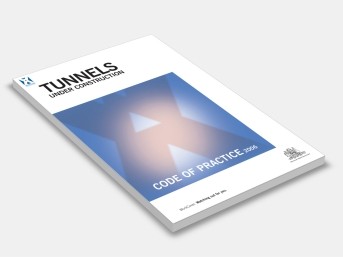Tunnels Under Construction
WorkCover NSW
The code gives practical advice on how to decide on appropriate measures to eliminate or control the OHS risks that may arise in the course of tunnel construction. In doing this it provides guidance to employers in the industry on implementing the requirements of the OHS Act and the OHS Regulation, which should be read in conjunction with this code of practice.
The code explains the processes involved in the systematic management of OHS risks and outlines how to apply a risk management approach to the hazards commonly encountered in tunnel construction in NSW. It is intended to help in identifying the hazards, determining how serious the risks from those hazards are and implementing the most effective means of eliminating or controlling those risks.
The code is principally aimed at employers, employees, self-employed persons, principal contractors and subcontractors, but is also intended to assist others involved in the process such as clients and tunnel designers. The code is not intended to be applied in the construction of mines.
The provisions of this code should be considered during the tendering phase, as well as the planning and preparation stages for carrying out the work. The code outlines regulatory requirements (under the OHS Act and OHS Regulation), as well as safety recommendations that may need to be factored into these processes. To effectively implement the code, employers need to be aware of these requirements and have procedures in place to apply them.
What Is An Industry Code Of Practice?
Foreword
What Is The Aim Of This Code Of Practice?
What Is This Code Of Practice About?
Who Is This Code Of Practice For?
When To Use This Information
What Do The Symbols In The Code Of Practice Mean?
Chapter 1: Establishment
Chapter 2: A Systematic Approach To Managing Risks In
Underground Construction
Chapter 3: Design For Safe Tunnel Construction
Chapter 4: Training, Instruction, Information And Supervision
Chapter 5: Managing Risks During Tunnelling
Appendix 1: Workers Compensation Insurance
Appendix 2: Useful Publications
Appendix 3: Hazard Classification Of Common Fuels And Atmospheric
Contaminants In Tunnelling
Appendix 4: Heat Stress And Air Cooling
Appendix 5: Ventilation Methods And Equipment
